RYU Gas Fee Calculator
Ethereum gas fees make buying small-value tokens like RyuJin (RYU) costly. Calculate your actual trade costs based on current gas prices and RYU token value.
Important Note: Based on article data, average gas fee is $2.37. At current RYU price of $0.00000003, you're paying over 7,900% in gas fees for small trades.
When you hear about a new crypto coin like RyuJin (RYU), it’s easy to get caught up in the hype. A 157% price jump in 24 hours? A quadrillion-token supply? A dragon-themed project with a locked contract? It sounds like a meme coin miracle. But here’s the real question: Is RyuJin just another speculative gamble, or does it have something lasting underneath?
What RyuJin Actually Is
RyuJin (RYU) is an ERC-20 token built on the Ethereum blockchain. It launched on February 3, 2024, and was created as the native currency for the Omikami Ecosystem - a project focused on blending digital culture, community ownership, and decentralized finance. Unlike many tokens that are just for trading, RyuJin was designed to be the engine inside a larger platform, meant to reward users, secure transactions, and grow with the ecosystem.
Its most unusual feature? Zero transaction taxes. That means when you buy or sell RYU, there’s no hidden fee taken out to fund marketing or wallet rewards. Most new tokens charge 5-10% in taxes, which eats into your profits. RyuJin doesn’t. That’s rare. And it’s not just a marketing claim - the contract code is public, and the developers renounced ownership. No one can change the rules, freeze wallets, or dump more tokens. That’s a big deal in a space full of rug pulls.
The Numbers Don’t Lie - But They’re Confusing
RyuJin has a total supply of 1,000,000,000,000,000 tokens - that’s one quadrillion. It sounds insane. And it is. But here’s why it exists: it’s a trick to make the price look tiny. Right now, the price is around $0.00000003. You can buy trillions of RYU for a few dollars. To most people, that feels like a bargain. But experts call it a psychological trap. It makes the coin seem affordable, but it doesn’t change its actual value.
Market cap numbers vary wildly depending on who you ask. CoinMarketCap says RYU is worth about $5.1 million. Coinbase says $25.5 million. Why the difference? Coinbase uses the fully diluted valuation - meaning it assumes all one quadrillion tokens are in circulation. But only about 963 trillion are actually out there. That’s 96.38% of the total. So CoinMarketCap’s number is more realistic. But even at $5 million, RyuJin is tiny compared to big names like BNB or SOL. It’s ranked #1,401 out of thousands of coins.
How It Works in Practice
If you want to buy RYU, you need an Ethereum wallet like MetaMask. You’ll need ETH to pay for gas fees. That’s where things get messy. The average gas fee on Ethereum right now is $2.37. The value of the RYU you’re buying? Less than a penny. That means you’re paying over 7,900% more in fees than the token is worth. For small trades, it’s not worth it.
Trading RYU happens mostly on decentralized exchanges like Uniswap or PancakeSwap. But because it’s not listed on big centralized exchanges like Binance or Coinbase, you’re stuck with lower liquidity. That leads to slippage - when your trade executes at a worse price than expected. During the June 2024 price spike, users reported slippage as high as 8.7%. That’s a $100 trade turning into $91.30 before you even realize it.
And the community? It’s loud. The official Telegram group has over 8,300 members, with daily engagement rates higher than most coins its size. People are excited. But that excitement is fragile. Twitter is full of warnings. One user summed it up: “Volume dropped 63% since June, but price stayed flat. That’s not a bull run - that’s a corpse holding its breath.”
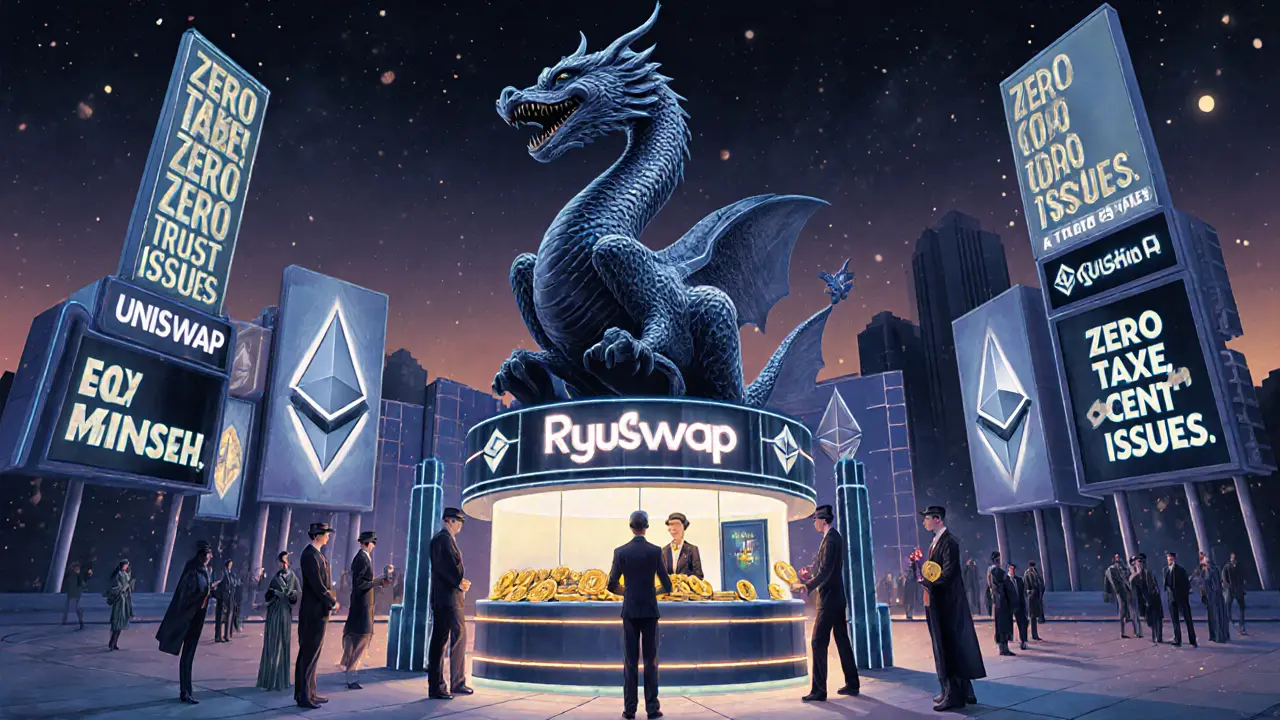
Why Some People Love It
For the believers, RyuJin is a clean experiment. No taxes. No dev wallet. No pre-sale dumps. The liquidity is 100% locked through UNCX - meaning no one can pull the plug. That’s a huge win for trust. Security experts at UNCX Network confirmed that 78% of new Ethereum tokens they’ve audited in early 2024 had unlocked liquidity or hidden dev funds. RyuJin didn’t. That’s why some call it a “best practice” launch.
Users on Reddit report real wins. One trader said he made 37% in a week during the June pump, thanks to the zero-tax structure. No fees eating into his profits. On Trustpilot, 4.1 out of 5 stars from 28 reviews praise the easy MetaMask setup and responsive Telegram team. For a project this new, that’s solid.
Why Experts Are Skeptical
But here’s the counterpoint. CryptoSlate’s senior analyst Maria Chen gave RyuJin a 6.2/10. Her main criticism? “No clear utility beyond the Omikami Ecosystem.” If Omikami doesn’t grow, RYU has nowhere to go. Right now, it’s a token with no real-world use outside its own platform.
DeFi researcher Michael Torres is even harsher. He says the quadrillion supply is a “mask for economic weakness.” The price moves because of hype, not because anyone is using it for anything meaningful. It’s a meme coin dressed up as a DeFi project.
And then there’s the listing problem. Binance and Coinbase won’t list tokens under $0.001. RYU is at $0.00000003. Even if it grows 10x, it’s still 30 times too low. Without a major exchange listing, it’s stuck in a small, volatile bubble.
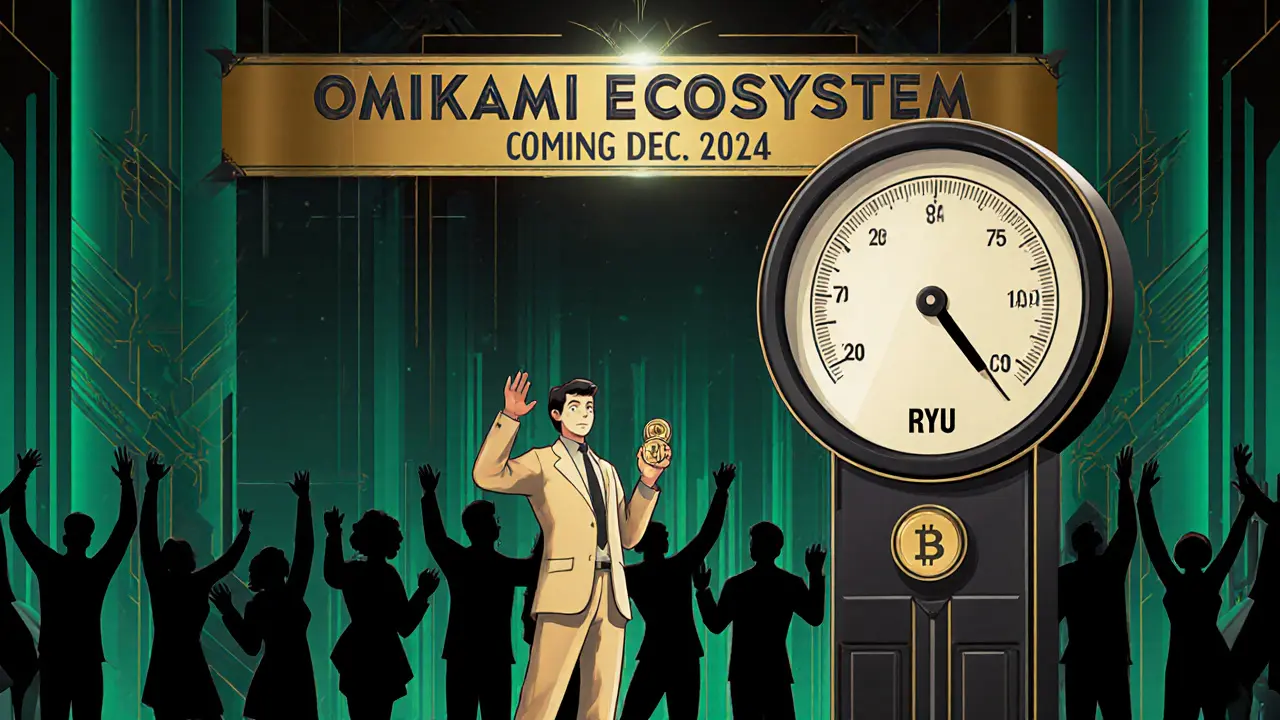
The Road Ahead: Staking and Survival
The project’s future hinges on one thing: the Omikami Ecosystem. If it becomes a real platform with games, NFTs, or community tools - and if RYU is the only way to use them - then the token gains real value. The roadmap says staking will launch in December 2024. That means users could lock up RYU and earn rewards. That’s a step toward utility.
But here’s the catch: staking only works if people are already holding the token. If the price keeps dropping, people will sell. If the ecosystem doesn’t deliver, they’ll leave. It’s a chicken-and-egg problem.
Right now, 92% of RYU holders have less than $1,000 invested. That’s typical for early-stage community coins. But it also means there’s no institutional backing. No venture capital. No big players. Just retail traders betting on a dream.
Should You Buy RyuJin?
If you’re looking for a long-term investment with solid fundamentals, RyuJin isn’t it. It’s not Bitcoin. It’s not Ethereum. It’s not even UNI or CRV.
But if you’re someone who likes high-risk, community-driven projects - and you understand the risks - then RYU might be worth a small bet. Think of it like buying a lottery ticket with a 1% chance of winning. You don’t put your rent money in. You put in what you can afford to lose.
Here’s how to approach it:
- Only invest what you can afford to lose - completely.
- Use MetaMask and connect to Uniswap or PancakeSwap. Don’t trust random websites.
- Use the contract address: 0x3d8c... (verify it on the official ryujin.ai site).
- Trade during off-peak hours (2-6 UTC) to save on gas fees.
- Set your slippage tolerance to at least 10% during volatile times.
- Watch the Omikami Ecosystem updates. If staking launches and users actually use it, that’s a green flag.
Don’t buy because of a price spike. Buy only if you believe in the ecosystem. And even then - keep it small.
Final Thoughts
RyuJin isn’t a scam. It’s not a rug pull. The contract is locked. The devs are gone. That’s more than most new tokens can say.
But it’s also not a revolution. It’s a gamble wrapped in clean code. Its success depends entirely on the Omikami Ecosystem becoming something real - not just a website and a Telegram group. If that happens, RYU could rise. If it doesn’t, it’ll fade into the graveyard of forgotten meme coins.
Right now, it’s a test. A test of whether a zero-tax, community-backed token can survive without hype, without big exchange listings, and without a clear path to mass adoption. So far, it’s holding on. But it’s not winning yet.
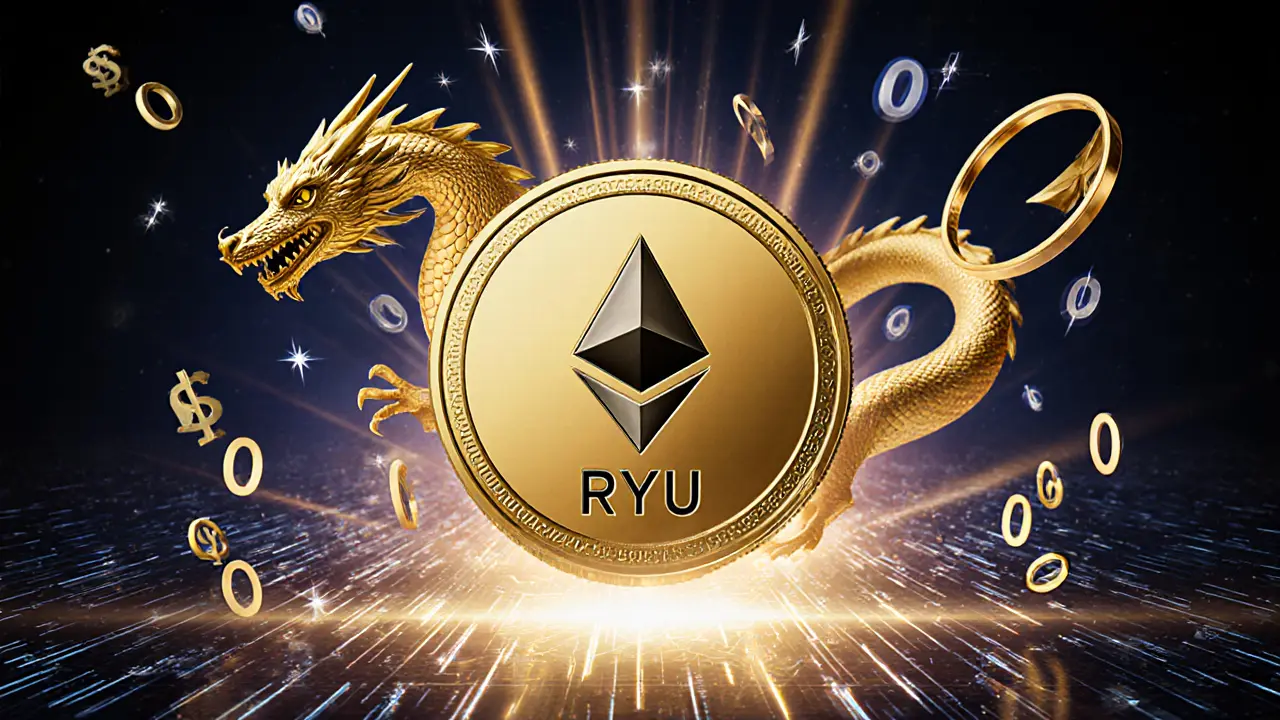
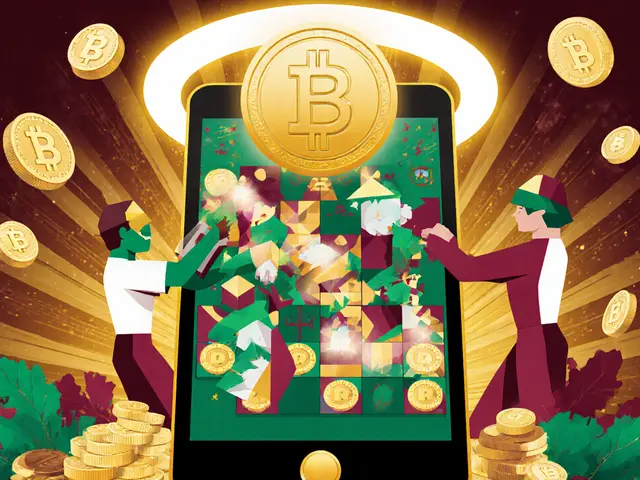

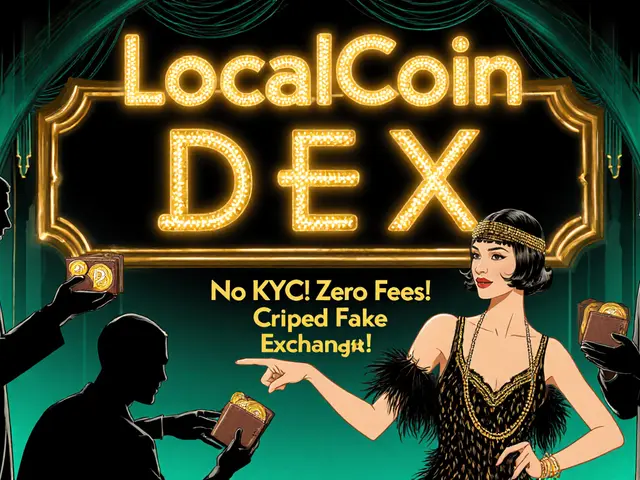
Arjun Ullas
November 5, 2025 AT 01:01RyuJin (RYU) represents a fascinating case study in tokenomics, albeit one that remains fundamentally unproven at scale. The absence of transaction taxes is indeed an exceptional design choice-rarely seen in a space dominated by extractive fee structures. However, the zero-tax model only functions optimally under conditions of high liquidity and low volatility, neither of which RYU currently enjoys. The quadrillion supply is not a gimmick-it is a mathematical necessity to maintain a perceptibly low price point, which psychologically lowers the barrier to entry for retail investors. Yet, this same structure renders microtransactions economically irrational due to Ethereum gas fees that dwarf the token’s intrinsic value. Until RYU achieves meaningful utility within the Omikami Ecosystem, it remains a speculative artifact rather than a functional asset.
Steven Lam
November 5, 2025 AT 23:03bro this is just another meme coin with a fancy website and a telegram group full of people pretending they know what theyre doing
Noah Roelofsn
November 6, 2025 AT 21:25Let’s be precise here: the contract renouncement and liquidity lock via UNCX are legitimate, verifiable, and commendable-far beyond the 78% of tokens audited in early 2024 that retained dev wallets or unlocked liquidity. The real vulnerability isn’t the code-it’s the narrative. RYU’s value proposition is entirely contingent on the Omikami Ecosystem delivering functional, engaging, and persistent digital experiences. Without games, NFT integration, or community governance tools, this is a token without a purpose, dressed in the aesthetics of DeFi. The 37% weekly gain cited by one trader? That’s noise, not fundamentals. The only sustainable metric is adoption, not price pumps fueled by FOMO and zero-tax arbitrage.
Sierra Rustami
November 7, 2025 AT 16:20USA built the internet. China builds AI. India builds scams. This RYU thing? Pure Indian crypto theater. No real utility, no real team, just a bunch of guys with Telegram usernames and a contract they copied from GitHub. Don't fall for it. Real money stays in BTC and ETH.
Glen Meyer
November 9, 2025 AT 03:42you guys are so naive. this is exactly how they lure in the little guys. you think you're getting in early? you're the last one on the bus. the devs already sold their bags months ago and now they're just watching you trade while paying $2 in gas for a token worth 0.00000003. you're not investing-you're donating to their yacht fund. wake up.